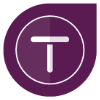Every business needs a social presence. The most appropriate platform(s) depends on your business and your target market. Here we provide you some guidance on how to leverage social media for small business. Understanding the basics is the first step in getting started, from establishing your social profiles to connecting with your website.
How Social Media Can Help Grow Your Business
Social media is a great way to create a larger following for your business, create brand awareness and engage with customers. Having customers share, like and re-post your content is in essence a form of advertising! Consumers frequently look at both a business’ social media and at their website before contacting the business. Social media almost like a window into what you and your business have to offer and what the customer experience will be. Due to the growth and influence of social media, social media for small business is as much of a requirement as a website.
As of 2021, an estimated 3.96 billion people were using social media worldwide.
– We Are Social and Hootsuite
Selecting the Best Social Platforms
The first step is to identify the social platforms that you will use for your business. Depending on the type of business and your target consumer, pick the platform(s) that make the most sense for you. We have highlighted the top five platforms that you will most likely include in your selection process.
Facebook is the largest social platform and skews a bit older. Because social media for small business find this platform to be a good place to start. Instagram skews a bit younger and tends to be more visual. One downside of Instagram is that you cannot place links in each post. Many businesses include the verbiage “link in bio” at the end of a post to direct users to the website URL in their bio.
Twitter is very timely and great for getting out quick bits of information as the character limit is only 280. Because of its timely nature, many businesses find they must tweet multiple times a day to break through the clutter. Pinterest is another very visual medium and requires very frequent posting or “pinning” in order to keep engagement levels high. LinkedIn skews more toward professionals and B2B. There are numerous other platforms, but for purposes of this post, we are going to focus on these top five.
Also read: DIY Website Builder or Hire a Professional?
Here’s the most important tip for selecting your social platform(s). Social media algorithms are such that if you don’t engage, the activity you do post does not get presented to your followers. Because of that, social media takes time, energy and effort. Or it takes money to pay someone else to do it for you. Remember, it is not just the time it takes for posting – it is also the time for creating the content, engaging with followers, and engaging with other content. Establishing a social presence then letting it go dormant is worse than no social presence at all. Pick the one or two platforms that make the most sense for your business and that you know you can maintain, or can afford to farm out.
Setting-up Social Media for Small Business
The first step is to set up a business profile/page on the platform(s) you select. Business accounts have benefits that personal accounts do not. An important note about Facebook. On Facebook, you will need a personal profile first, then you can set up a business page. Note the difference in the naming of the two. It is important to note that Facebook does not allow businesses to be set up as personal profiles and that there is a clear distinction at Facebook between personal profiles and business pages.
You can set up Twitter and Instagram accounts under your business name without the need for a personal account. Pinterest gives you a bit more flexibility. You can convert a personal Pinterest account to a business account, add a stand alone business account or add a business account to an existing Pinterest personal account login.
If you choose LinkedIn, you will need to set up an account for yourself (if you don’t already have one), then add your company page and add yourself as an employee, noting your title.
50% of consumers say they follow brands on social media to learn about new products or services.
– Sprout Social Index
Complete Your Bios and Business Social Profiles
For all of the social platforms, make sure to leverage the bios and images. Consider the bio and image as free advertising. When someone comes across your profile, you have a chance to tell them who you are and what you do. Each profile has limits on the number of characters so you will need to be brief. Instagram gives you the least space in the bio with 150 characters. Start with Instagram then build out your other versions from there.
Make good use of the images at the top of your profile. Instagram only allows for the small circular “avatar” which other platforms also include. But the other platforms also give you a lot of real estate with their top profile image. The top profile image sizes vary by platform and frequently change. That is why we keep this always updated list of social sizes from Sprout Social bookmarked.
Completely fill out your social profiles with contact info, your hours, website URL, links to other social accounts, and the ability to direct message your business. With Facebook and Instagram, make sure to link your accounts. This is done in the Page Settings area of your business page. With LinkedIn, if you are just now setting up your personal profile or have not updated it recently, make sure to complete it or update it. You will definitely want to include information about your business like your title and a brief description of the products or services offered.
Also read: 12 Foolproof Signs Your Website is Outdated?
Website Social Links
If someone visits your website, they may be curious to know if you have a social presence. So make sure to include links to your social channels on your website. There are easy ways to add the logos for each of the social platforms you have selected and make them link-able to each of your accounts. We recommend placing these at the bottom of your website. While you want to let your visitors know they can find you on social media, your website needs to focus on selling your products or services, not to take your site visitors off your site. The site footer is a common location for social links so visitors are accustomed to finding them there.
Social Feed on Your Website
There are a number of situations in which it may make sense for you to consider displaying your social feed on your website. This is especially helpful in certain segments. Consider if you are in a very visual businesses like photography where an Instagram feed may be a great way to highlight your recent work. Another example is if you are a business that posts newsworthy information to Twitter. In this case, including your Twitter feed on your website makes sense.
These examples are both great ways to utilize this feature. If want to consider this for your website, select the one social channel that resonates most with your target market to avoid cluttering your website. And check the feed on your website often as the connection does sometimes break.
Need Help Getting Started?
We work with small businesses that need help with building a new website or updating an existing website. Does your website have out-dated design, slow loading time, or lack of modern website features? We can help! We do website design and development, WordPress Care Plans, and as-needed support with our HelpMe! service.
In addition to the resources in this blog, we have a number of free resources. First is our free WordPress website audit. It is a $299 value that we offer small business owners for FREE! Next, we provide a free no obligation consultation. Schedule a time directly on our calendar. We look forward to assisting you!






